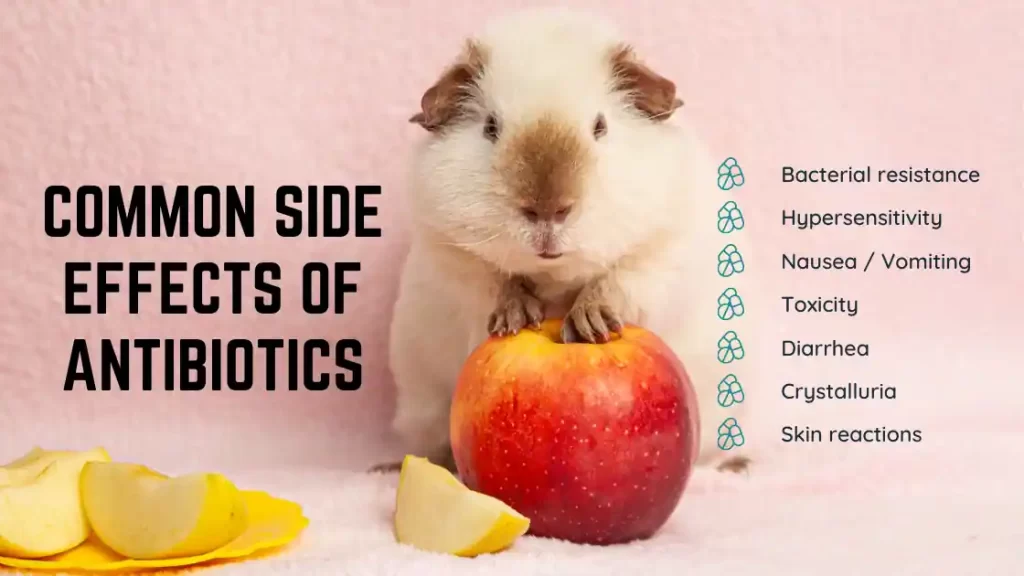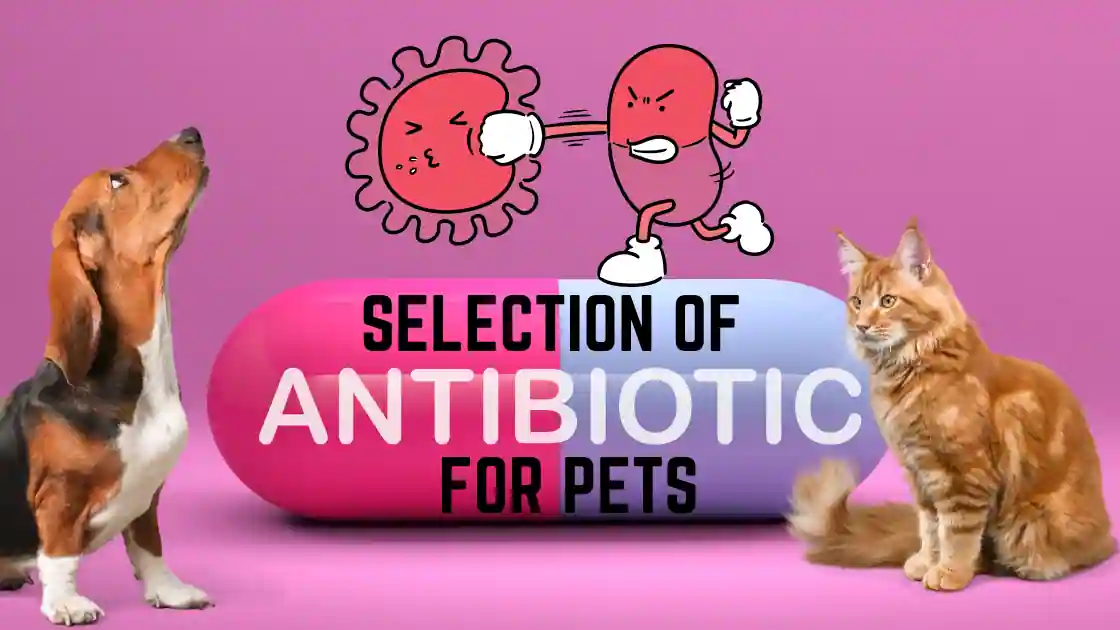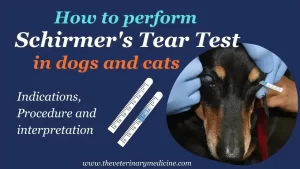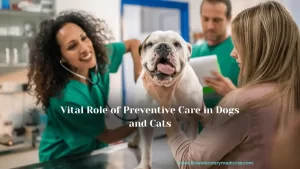How to Select Antimicrobials for Pets
Antibiotics Uses, Side Effects, and Safety Considerations
Pets suffer from a variety of diseases and infections in their lifetime. Not all the conditions or diseases need to be treated with antibiotics. But sometime to prevent probable and existing infections antimicrobials/ antibiotics are prescribed. Right selection of antibiotics can save lives from life threatening infections / disease causing microbials.
Classes of antibiotics:
Since the discovery of penicillin new antibiotics have been discovered. For ease of study and their mechanism of action/ chemical structure they have been divided into following groups / classes:
- Penicillins – Ampicillin, Amoxicillin,
- Cephalosporins (first to fourth generation) – Cephalexin, Cefazolin, Cefuroxime, Cefoperazone, Cefotaxime, Ceftriaxone, Cefixime, Ceftiofur, Cefpodoxime, Cefovecin
- Carbapenems (Penems) – Imipenem, Doripenem, Ertapenem, Meropenem etc
- Aminoglycosides – Gentamicin, Amikacin, Kanamycin, Tobramycin, Neomycin,
- Quinolones / Fluoroquinolones – Enrofloxacin, Danofloxacin, Pradofloxacin, Orbifloxacin, Marbofloxacin, Ciprofloxacin
- Sulfonamides Sulfamerazine, Sulfadimidine, Sulfadiazine, Sulfamethoxazole, Trimethoprim
- Tetracyclines – Chlortetracycline, Doxycycline, Minocycline, Oxytetracycline, Tetracycline
- Macrolides – Erythromycin, Tilmicosin, Azithromycin, Clarithromycin, Gamithromycin, Tylosin, Tildipirosin, Tulathromycin
- Lincosamides – Lincomycin, Clindamycin,
- Chloramphenicol – Thiamphenicol, Florfenicol,
- Miscellaneous – Bacitracin, Novobiocin, Rifampin (Rifampicin), Nitrofurans, Vancomycin,
Spectrum of action against bacteria:
According to the efficacy of antibiotics they can be grouped in:
- Narrow-spectrum antimicrobials
- Moderate-spectrum antimicrobials
- Broad-spectrum antimicrobials
Narrow spectrum antibiotics has limited efficacy or activity against different Gram positive and Gram negative bacteria. Broad spectrum antibiotics has a wide range of efficacy against both Gram positive and Gram negative organisms. To increase the efficacy or spectrum antibiotics are combined with other agents i.e. penicillins with Beta-lactamase inhibitor like Clavulanate or Sulbactam and Sulphonamides with Trimethoprim.
Target Organ / System:
Not all the antibiotics can be used for all diseases. Antibiotics suitable for skin may necessarily not work in case of uterine or urinary tract infections. Tissue penetration or concentration of antibiotics classes differs from each other. Like Clindamycin has good results in case of bone, skin and otic (ear) infections; Enrofloxacin works well for skin and UTI while Amoxicillin is good soft tissue and bone infections.
So choice of antibiotics for the treatment depends on both target organ / tissue as well as micro-organism.
Common Health Conditions / Diseases of Pets Treated with Antibiotics:
Infection can occur in any part of the body that can be caused by different species of bacteria. Most common infections treated by antibiotics in pets are:
Soft tissue infects, bone infections, eye /ear infections, respiratory tract infections, gastrointestinal infections, urinary tract infections, skin infections, tick fever/ blood protozoa, post operative to prevent secondary bacterial infections etc.
Time- and concentration-dependent antimicrobials:
Some of antimicrobials has their increased effect with the increased dosage while some with increased frequency. So, they can be divided in two types –
Time-dependent antimicrobials
In this case, the key factor that correlates with efficacy of the antimicrobial is the percentage of time within a dosing interval that the concentration of antimicrobial remains above the minimum inhibitory concentration (MIC) for the target organism. Antibiotics like Beta-lactams (penicillins and cephalosporins) are considered to be time dependent antimicrobials. It means, the dosing interval is critical and missed doses will impact on efficacy of the antibiotics.
Concentration-dependent antimicrobials
In this category the efficacy of the antimicrobial agent or drug, in terms of bacterial killing, increases as the drug level or dosage increases above the MIC of the organism.
In other words, a high concentration above the MIC levels is key and thus dose size is critical. It doesn’t seem to matter if the level of the antimicrobial dips below the MIC for part of the dosing interval, provided this high concentration has been achieved.
Fluoroquinolones and aminoglycosides are generally considered to be concentration-dependent. This is reflected in the fact that aminoglycosides, despite having relatively short half-lives, are most often dosed at a relatively high dose rate but only once daily.
Drug of choice:
Some antibiotics have good efficacy in particular affections or system. Like Clindamycin has good results in ear affections, bone, dental affections, skin affections while Tetracyclines are good for blood protozoa, pyrexia of unknown origin. Topical Aminoglycosides and Fluoroquinolones have good results in ear and eye infections. Results of therapy depends on the sensitivity of causative organism and selection of antibiotics both.
Antimicrobial Resistance:
Antibiotic resistance occurs when response of the target bacteria changes (enzymatic degradation of antibiotics, changes in membrane permeability, alteration in target antimicrobial proteins) towards the medicine and it becomes ineffective on the bacteria. Increasing antibiotic resistant is main concern and injudicious use may result into ineffective treatment and antibiotic resistance. Potentiated or combination of drugs may help in combat against such resistant microorganisms or sometimes in case of cross resistance.
Rational Antimicrobial Combinations:
Combinations of two or more antimicrobials are helpful in the treating a mixed infection. Bacteriostatic drugs can be combined with other bacteriostatic drugs for better efficacy and likewise bactericidal drugs. Combination may be useful if there is a mixed infection – e.g. an aminoglycoside (Gram-negative spectrum) with clindamycin (anaerobic spectrum).
Synergism is described for some combinations where effect is more than additive effect – e.g. aminoglycosides combined with penicillins or sulphonamides combined with diaminopyrimidines.
Combinations may be indicated for agents where resistance develops rapidly, so that rapid bacterial killing is desirable – e.g. rifampin combined with a macrolide such as erythromycin, clarithromycin or azithromycin (in accordance with the prescribing cascade).
Dosage Forms and Route of Administration:
Antibiotics are available in different dosage form like topical ointments, powders for topical use, powder for injection, capsules, oral suspensions / liquids, liquid or suspension for injections, oral tablets etc. All antibiotics are not suitable for all dosage form like Aminoglycosides or Gentamicin like antibiotics always comes in liquid form for injection while third generation cephalosporins are available in tablet, injection and oral suspension forms. Condition of the animal / disease state / animal behaviour is deciding factor for the dosage forms like a pet with severe gastritis will be better managed with injectable antimicrobials due to inability hold it in stomach till absorption.
Bioavailability is highest and effect is the most rapid with intravenous administration while decreases with intramuscular, subcutaneous and least in case of topical application. Some dosage forms need to be given by specific route only according to their dosage forms like Oxytetracycline injection is irritating solution so either given deep intramuscular or intravenous route. Some long-acting preparations are need to be given by deep intramuscular route only.
Medicines meant for oral administration can be given directly (after meals), or can be disguised in the food / pill pockets if indicated. Pills can be given using pill dispenser, suspensions or syrup using syringe without holding tongue or can be mixed with the food if permissible. Topical applications can be applied using a gloved finger possibly. Put E-collar to avoid licking of topical antibiotics as it may be harmful. Follow the instructions carefully regarding frequency, for proper dosing.
Adverse Reactions / Side Effects:

Antibiotics are prescribed for the health benefits of pets but during the treatment it may outweigh some potential risk. Adverse reactions due to drug over dose, long term use or hypersensitivity are commonly noticed which varies with class of antibiotics. Collective side effects of different classes are Crystalluria (sulfonamides), Hypersensitivity /anaphylaxis, Keratoconjunctivitis Sicca, Hepatic Necrosis, Blood Clotting Disorders, Blood Dyscrasias, Thyroid Metabolism Disorders, Skin Reactions, Diarrhoea, Toxicity (ototoxicity and nephrotoxicity), Altered Potassium Regulation, Vomition, Loss of Appetite, Tremors / Nervous signs etc. may be observed.
Most commonly seen side effect is gastrointestinal upset because antibiotics can’t differentiate between normal and harmful microflora. To replenish these beneficial bacteria and prevent microbiome imbalance probiotics can be added to the part of treatment.
In case of hypersensitivity or side effects contact nearby vet or poison control centre immediately as it may be life threatening sometimes like in case of anaphylactic shock.
Target Species:
Neither every antibiotic nor dosage forms are approved for every species or dogs / cats. Doxycycline tablets may cause esophagitis in cats and similarly overdosing of fluoroquinolones may cause sudden blindness. Preparations or formulations not approved for use in dogs should not be given or prescribed. Antibiotics indicated in dogs may not be safe for use in cats so always follow formulary guidelines or recommendations.
Safety in Young, Pregnant and Lactating Animals:
Toxic effects of aminoglycoside like ototoxicity and nephrotoxicity are more common in young animals due to prolonged use. Some medicines penetrate placental barrier (foetal teratogenic changes) and blood brain barrier. Some residue is observed in meat and milk in case of food animals and a withdrawal period is recommended in such cases.
Antibiotics Drug Interactions and Warnings:
Certain antibiotics may interact with other drugs/antibiotics which may result into reduced efficacy or toxicity. Ongoing medications must be discussed before prescribing. For an example administration of antacids or calcium preparations along with Tetracyclines can reduce the bioavailability or efficacy of it.
Some over the counter topical preparation may be available but usually it requires a prescription from a registered veterinary practitioner.
Conclusion:
If something worked last time that doesn’t mean it will work all the time and if this one suited to your friend’s dog in same condition and will work for your pooch too.
Not every condition needs antibiotic for treatment (like simple GI upset, non-septic arthritis, lameness etc.). Appropriate combinations can be used to avoid failure of therapy or to prevent antibiotic resistance. Always keep drug interactions and side effects in mind. Follow the frequency of administration and warnings regarding use in breeds, species, paediatric, pregnant, lactating animals etc. In case of failure of therapy culture and sensitivity tests must be performed.
References:
BSAVA Guide to the Use of Veterinary Medicines, 2010
Handbook of Veterinary Pharmacology by Walter H. Hsu
Fundamentals of Pharmacology for Veterinary Technicians, Second Edition by Janet Amundson Romich





